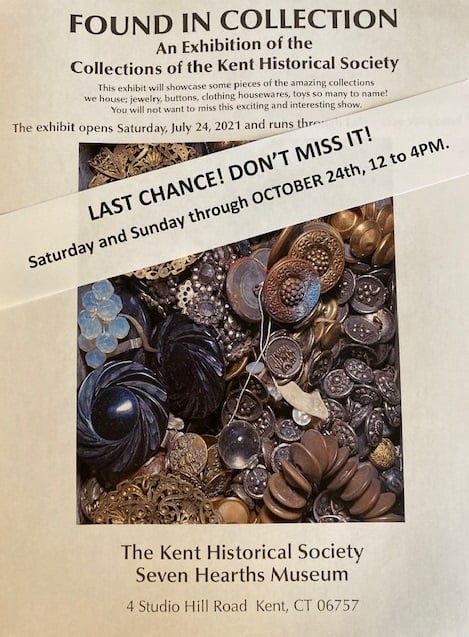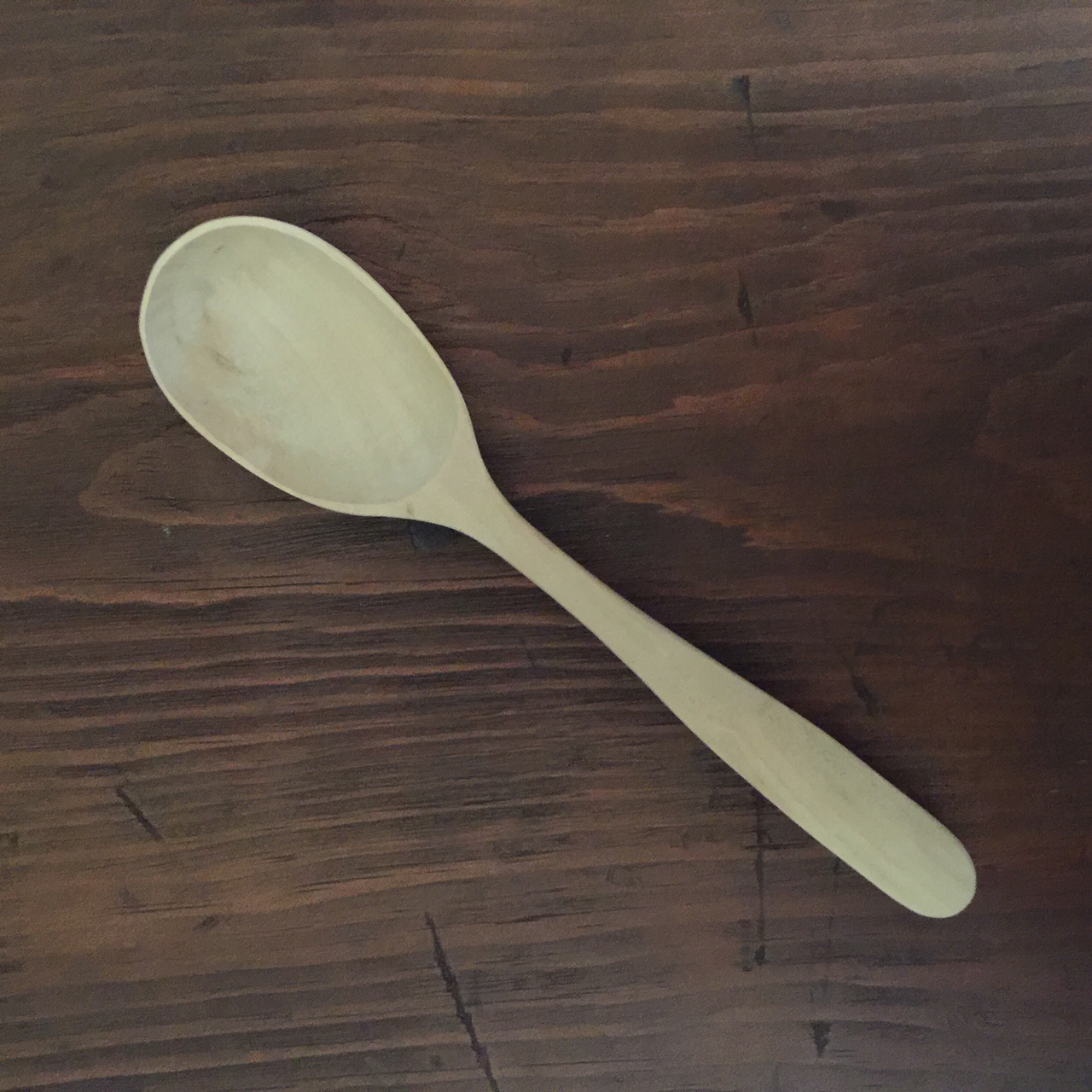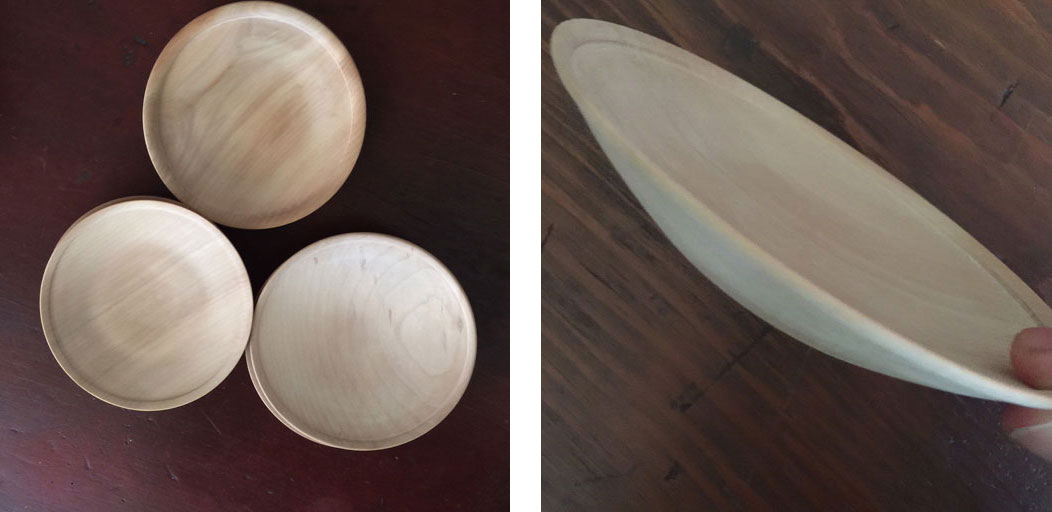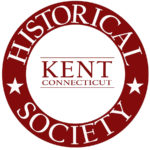2008 EXHIBIT
Pulling Kent Out of the Closet Discovering our Hidden Treasures
In 2007, the Kent Historical Society received a grant from The Connecticut Humanities Council to conduct a long overdue inventory of our clothing collection. When we finished poking through box after box of forgotten treasures, we knew we just had to share our discoveries with you. As we spread the word around the community, many of you offered your own cherished garments to be included in the exhibit. The resulting collection spans over 150 years of Kent’s history, and offers a unique way to have a conversation about our community’s social, economic and cultural past – through the medium of clothing! The Connecticut Humanities Council agreed, and awarded us another grant to create the exhibit.
Pulling Kent Out of the Closet: Discovering Our Hidden Treasures will cover a selected range of periods, with stops at Victoriana, the Roaring 20s, the Rebellious Sixties, as well as a range of types of clothing, from farmers garb to Civil War mourning to Colonial at-home wear. We hope that the questions raised by looking at our local past will enable you to reflect on our current attitudes toward clothing and the material culture we inhabit as Americans today, early in the 21st century. It is a throw-away society, one increasingly beset by economic and environmental struggles. How did we get to this point? What lessons could we learn from our past concepts about clothing and other possessions? Is our way necessarily better?
We invite your comments at the end of your tour, where a survey form will be available in the Gift Shop for you to fill out. Your participation will be of great help in our choice of topics for future exhibitions by the Historical Society. It also is a great asset as we apply for future funding grants.
As always, none of our activities would be worth it without you. Our sincere thanks to you for your donations of family treasures (heirlooms), and for sharing your personal histories with the community.
The Kent Historical Society is pleased to welcome you to Seven Hearths, a Colonial structure which was the home of internationally renowned artist George Laurence Nelson from 1919 to 1978, and which provides an interesting backdrop for the varied periods of clothing on display. Seven Hearths is, as you will see, in a state of restoration, which raises many sensitive questions of authenticity and modernization. To what standard are we restoring? It was built in 1751, but has been inhabited continually by a series of families, culminating with the sophisticated Nelsons in the twentieth century. Our goal is to present the house in such a way that its wonderful history is evident throughout. The endeavor is expensive, and we hope that you will consider making a donation to the restoration fund. Together we will return Seven Hearths to its deserved place in our town’s history!
Thank you from the 2008 Exhibit Committee
Marge McAvoy
Stacey Danielson (consultant)
Jane Suttell Zatlin
Beth Dooley
Jeff Morgan
Illustrations in this guide are from the collection of the Kent Historical Society, unless otherwise noted.
Daily Life
Frank Naboriny, Kent farmer
The Kitchen
We begin our journey at Seven Hearths in the kitchen. Here we see what the average middle-class or working person might have worn in everyday life in nineteenth-century Kent.
The Barton family is represented by a faded but carefully mended calico dress and a pair of much worn shoes. A skillfully patched man’s shirt once belonged to a member of the Hall family. Belinda sits at the kitchen table, attending to the mending. Belinda is the fully articulated artist’s model, who once belonged to Asher Durand, and was purchased from his estate by George Laurence Nelson. Belinda has graced various rooms at Seven Hearths since that time and is a beloved familiar figure to our regular visitors.
There are photographs of Kent families, and tools and equipment of every day life: a laundry tub, baking equipment, sewing kit and a 1902 Sears Roebuck Catalog complete this vignette.
Our relationship to the kitchen and the preparation of food has evolved in much the same way we acquire our wardrobes. Today, most of us rely on the grocery store for much of our food needs, and some of us use the kitchen simply to reheat already prepared food.
Most of us do not make the clothes our families wear, let alone shear sheep or grow flax, spin yarn, or weave cloth, as has been the case throughout thousands of years of clothing history. When we say we’ve made our clothes today, it usually means we have purchased cloth and sewn the garment using an electric sewing machine.
There was a shift during the Industrial Revolution from handmade clothing to mass-produced commercial garments. Until the nineteenth century, clothing was made at home – a labor-intensive chore for most working class families. Making a simple shirt or a pair of work pants took a lot of time. Clothing was mended and reused; it was valued.
Today, most of us, regardless of our social class, have large wardrobes, even if those wardrobes seem to be full of very similar garments. Teenagers, how many pairs of jeans do you own? Everyone, how many tee shirts? Most of us think nothing of occasionally cleaning out our closets and replenishing them with new things, even if the replacement clothes are very similar to what has been discarded. How different this would be if we had to, by hand, cut and sew each piece of clothing in our closets!
In light of the time and effort it takes to make a garment by hand, it is easier to understand the value that was placed on clothing, and on the mending and altering of the clothes on display here.
Sears Roebuck brought mass produced clothing to middle-class people in small and rural towns across America, through mail order, and allowed many more people accessibility to the latest fashion. It also freed up a lot of time for those whose responsibility was clothing the family, as of course did the sewing machine.
The sewing machine did not come into widespread popularity until the Civil War, when its use made possible the vast numbers of uniforms needed to supply the soldiers. Once it had come into use, its value was recognized, and many families became owners of Singer sewing machines in the postwar period.
Meatloaf Again?
The Lang Family
The Dining Room
Following World War II, there was renewed interest in the domestic world. The neat little houses behind white picket fences, full of modern appliances, symbolized the 1950s family: stay-at-home moms and working dads complete the picture of the traditional American family, which is often politically referenced today.
During World War II, there was a ration on the amount of cloth used in making each garment, so 1940s women’s fashion embraced a narrow rather tailored silhouette out of necessity. Following the war, Christian Dior, a French couturier, introduced the “New Look” in 1947, which featured a nipped-in waist and a voluminous skirt. This style quickly got translated into all levels of fashion. This light airy look seemed just right for the social life of optimistic postwar America: coffee with a neighbor or a church social, and an emphasis on family. The clothing here is from local residents and may not be Parisian, but certainly demonstrates how quickly fashion trickled down from European couture.
Fashion exists when people have enough money and leisure time to devote to it; add globalization (that TV in the corner) and a cheap labor market, and fashion will flourish and change at the astonishing pace it does today.
The 1950s was a prosperous and particularly optimistic time for Americans, and it is evidenced by the kind of clothes people chose to wear.
Relaxing at Home in Early Kent
The Front Hall
In the circa 1751 entryway, we encounter three Colonial era banyans mounted on mannequins. The 1987 Fall Bulletin of the Metropolitan Museum describes the banyan as being one of the most popular forms of men’s dress in the 18th century, a robe-like informal costume that tended to be more loose and flowing than other fashionable clothes of the period. These examples are on loan from Kent resident Jeffrey Morgan, and while not of Kent origin, typify what some of Kent’s most prosperous citizens might have worn at home from the late 1700s through the nineteenth century.
Today many of us get dressed just once – in the morning, but this is a rather recent development in the history of fashion. Throughout much of modern history, there were formal rules about dressing, and it was not uncommon to change clothes several times during the course of the day depending on one’s activities.
Working class families minimally had an everyday working costume and something special to wear to church. If one was of a higher class, in the nineteenth century, a woman might start her day in at-home attire (without uncomfortable whalebone stays), wear a different, more physically restricting, outfit to go to town, another dress for tea, and again a change for supper. Men of this class might have worn a banyan, as exhibited here, at home, a suit for business, and then changed to formal wear for dinner (which believe it or not is what we consider “tails” today – worn only for special occasions).
Some of us experience this in a similar way with the clothes we wear around the house after we return home from work. We take off our ties or high heels and put on sneakers and sweatpants. While this shift in attire is not as glamorous as changing into a banyan, it is the same idea: at-home comfort.
Proceed Upstairs (for those of you who cannot climb the stairs, we have photographs of the items on exhibit for you)
After Dark
Upstairs Front Hall
In this vignette, we get to experience a display of evening wear dating from around 1900. Notice the elegant white opera cape that once belonged to Kent resident Agnes Leeds Blake, loaned by her granddaughter Ky Anderson. The tuxedo and top hat belonged to Mr. Blake. On the north and south walls of the hallway is a pair of portraits by Laurence Nelson, one a portrait of himself in his tuxedo, and the other, his wife, Helen, in a black dress holding a large red feather fan. The nighttime skyline of Manhattan is visible in the background of both portraits.
According to fashion historian James Laver, clothing serves three purposes: utilitarian ( it keeps you warm, it keeps you dry), hierarchy (it announces your rank or wealth or social class, or professional position ), or for attraction (procreation of the species, “getting the guy”). Thorstein Veblen wrote in The Theory of the Leisure Class “dressing for status as an outward expression of wealth is indeed functional, by the very fact that such clothes prevent the wearer from engaging in manual labor. Also because of their restrictive design they need the assistance of others to dress the wearer and keep clothes in pristine condition.” In other words, you couldn’t bend over to do any housework and you had at least one maid, so people could tell at a glance that you were wealthy.
City Life/Country Life
George Laurence Nelson & F. Luis Mora, Former NYC residents and founding members of The Kent Art Association
The Gallery
This is the large gallery where George Laurence Nelson displayed his artwork when he lived here. Featured in this room are several garments that once belonged to Laurence and his wife Helen, as well as several paintings which portray them and his mother, in various city and country costumes. Nelson’s mother, Alice Kerr-Nelson Hirschberg, was descended from members of England’s upper class. An accomplished artist, she was considered by William Merritt Chase to be THE woman of the 19th Century, and her carriage, demeanor and clothing clearly demonstrate her status. Helen Nelson was also elegant, but equally comfortable in the country or city. Fondly remembered by many of Kent’s older residents, Helen was known for always being immaculately dressed, even when working in her beloved garden at Seven Hearths. A photograph of Helen, in her later years, shows her sitting in the garden, very much the lady, wearing her ever-present elbow length gray kid gloves. The Nelsons clearly epitomized the colony of transplanted New York artists whose cultural descendants still flock to Kent and the surrounding Litchfield hills.
Grief in Taffeta, Lace, and Jet
Front bedroom
In this room we take a look at the complex mourning customs of Victorian Kent.
The red dress on the table in the middle of the room was made in the fall of 1875 for two-year old Susie Belle Watson. She died several months later on December 15, 1875. She was the oldest of five children of Wellington Watson and his wife Mary Jane Morehouse Watson. The Watson and Morehouse families were prosperous merchants and business partners in Kent for over fifty years. Of Wellington and Mary Jane’s remaining children, only two survived to adulthood. One died at birth and the fifth only lived to the age of six. 50% of all children did not survive beyond the age of 10. They died of small pox, diphtheria, scarlet fever or diarrhea. While these black dresses on display are not from the Watson or Morehouse families, they do demonstrate the way in which wealthy Kent residents expressed their grief through their mourning clothes.
At the other end of the grieving spectrum in Kent are the families who lost cherished loved ones during the Civil War. The town of Kent sacrificed at least ten men to that war during the devastating Battle of Cold Harbor. Their ages ranged from 17 to 54, and they all left behind wives, parents, and children. They were primarily farmers or iron workers, and their families undoubtedly could not afford the expensive mourning clothes that the Watson family could. But their customs were just as strong. The Camden (NJ) County Historical Society website suggests that they might have put their regular clothes in a black dyepot in the backyard. “The reason you did it outside was that black dye was very pungent smelling. The diary of one woman from Virginia in 1864 mentions that ‘the entire town smells of dyepots’.” Given the fact that almost all of Kent’s soldiers came from the working class, the air in Kent was no doubt filled with grief and the smell of dye in the days following the Battle of Cold Harbor.
No matter what their station in life, women were bound by strict mourning rules. The period of mourning lasted for two and a half years. For the first year and one day they were in full mourning, could wear only black, and were generally covered in yards of crape. For the next nine months, the secondary period of mourning, the crape could be reduced, and other fabrics incorporated, but still all black. After that, they could add in small touches of color, such as a white lace collar or a pink ribbon. Gray and purple were also accepted colors, and beads and bows could be incorporated. “Half mourning” was the final stage, in which considerably more subdued color could be added.
Given this long proscribed time, mothers who lost many children could conceivably spend decades dressed in black. Today we may wonder at this lengthy mourning period. We do not have to wash the body, prepare it, dress it, and place it in a coffin, and many times we are not present at the time of death. Perhaps our modern tradition of an undertaker removing the body to prepare it for burial allows us to feel enough removed from the visceral impact of death that our emotional recovery can be quicker.
Orinda’s Day
Orinda Pratt and her brother Joel
Small Back Bedroom
The final stop on the second floor is the small back bedroom. The only room in the large 1751 house that does not have a fireplace, the back bedroom quite likely was originally used for spinning and weaving (since flax dust was highly combustible). We are basing this room on the diary of Miss Orinda Pratt, a remarkable 19th century Kent resident who made detailed notes about her daily life between the ages of 12 and 14, in which she describes the vast amount of sewing, mending, knitting and quilting that she was expected to do in a week’s time. Her diary illustrates well the story of clothing before sewing machines made life for the women of the house a great deal easier. She also details the close relationship her family had with Shofski, the traveling salesman who brought cloth, lace, trimmings, and other dry goods to the house on a regular basis. She describes an active sewing circle that she enjoyed from 1858 to at least 1862.
We have hung a large number of white cotton garments from the collection – fine examples of the detailed craftsmanship required of seamstresses in those days. Also on display are a sampler, a handmade quilt, and part of the Society’s collection of spinning wheels, flax wheels, hackles and other tools of the homemade clothing trade.
Return to the First Floor
Our Golden Moments
Front Parlor
Here we look at why we save clothes we love. Whether it be to hand down a wedding dress or christening gown for the next generation to use, for economic necessity (waste not, want not), to pass on a particularly valuable item, or for purely sentimental reasons (“it was Mom’s, I just can’t let it go”), we save clothes. This vignette features the most antique gown in our collection, originating from Gaylordsville, but typifying early Kent upper-class fashion. The “sentimental” category is represented by as well as a 1950s Anne Fogarty dress, loaned by Susi Williams, Marion Whynott’s mother’s 1940s coat, Ralph Ritchie’s tweed jacket and a lovely 19th century, pearl studded gown from the Historical Society’s collection.
Causing a Flap – Rebellion in the 20th Century
Studio: Western Half
Here we get a fun look at two eras of revolutionary change in fashion: the Roaring 20s, following World War I, when women dared bob their hair and raise their hemlines, and the late 60s when hippies wore tie-dye, girls wore miniskirts and go-go boots, and blue jeans became fashionable, not work clothes.
Geocities.com says that “the typical flapper was a young woman who was often thought of as a little fast and maybe even a little brazen,” and “The central phenomenon of the flapper era was the worship of youth”; the twenties was the beginning of fashion’s obsession with youth.
An elegant beaded flapper gown, shoes and handbag have been loaned by Darren Winston, along with the gown’s original dress shop box. A risque wool bathing ensemble, circa 1908, from our collection is displayed next to Miss Emily Hopson’s circa 1970 ready-to-go-at-a-moment’s-notice beach bag containing 2 bathing suits, 2 rubber bathing caps, 2 pairs of beach sandals, a short terry cloth robe and a towel. A paper dress in perfect condition, recently donated by Connie Sanders, hangs on the wall.
In ancient Egypt, styles changed slowly over hundreds if not thousands of years. In the past century, fashion trends emerged more quickly, first changing dramatically decade by decade, and now at such a dizzying pace that for more traditional manufacturers, who plan production over many months, a trend may have completed its cycle before the “goods” reach the store. With TV, the internet, and cell phones, trends can be transmitted instantly and globally. What is outrageous and rebellious today becomes standard and outdated literally tomorrow. Designers and manufacturers who must always be on their toes and on the alert for the next big fashion, have resorted to repeating designs, making retro fashion and vintage clothing another trend. (We have one thrift shop in Kent, which serves both as a used clothing and vintage fashion resource). Teenagers may be seen sporting bell bottoms much like those that their mothers wore in the 70s (while their mothers may shun such garb, as they lived through the original go-round).
Let’s Play Dress Up
Studio: East Half
As we step around a pile of contemporary Hip-Hop clothes in a typical teenager’s “horizontal closet,” we find a selection of reproduction period children’s wear, which will give our younger visitors a chance to play dress up, look in the mirror, and have their photos taken as a memory of this visit. If you’ve left the camera at home, there is a digital camera available and arrangements can be made to transmit the images to your family.
Gift Shop
Back Parlor
The last stop on our tour is the gift shop. Please sign the guest book. We hope you will take the time to fill out the survey and share your impressions with us. Your feedback is critical to our being able to compete for future public funding.
Before leaving, please check out our last display “Taking Care of Your Treasures”, how to care for treasured clothing. We have here a very fragile 1860s gown, which we wanted to display but were afraid to mount in any way. Please take a copy of step-by-step instructions on how to preserve your very old clothing, as well as a list of sources for appropriate storage materials. We hope you will consider saving things that are important to you, so that future generations may better understand life in this early twenty-first century. Think about it: if you don’t save it, how will historians 100 years from now know how to interpret your life? So, if in doubt, don’t toss it out! Give us a call first, and we can help you make the decision.
Sponsors of This Exhibit
Please patronize the fine fashion establishments who have provided funding for this exhibit: Back Country Outfitters, Country Clothes, Heron Gallery, Kent Fabrics, Quality Thrift Shop, Sundog Shoe & Leather, Terston Home Accents and Women’s Wear.
Our sincere thanks also to the following supporters:
Dooley Real Estate
Robert Hutchings, CPA
This exhibit was also made possible by a grant from The Connecticut Humanities Council.





 Joy Gaiser is a retired music and special education teacher and was honored to be chosen the Teacher of the Year in New Milford for the 2010-11 school year. She also was the president of the New Milford Historical Society for 7 years and ran the summer colonial crafts program at their one-room schoolhouse with a fellow teacher. She will teach the children to make paper from recycled paper, learn about color utilizing a variety of mediums such as crayons, markers, and watercolors and techniques such as mosaic resist. They will also do some creative paper folding activities and have a chance to embroider one of their own drawings or sew a catnip mouse if they prefer. Each child will be given a sketchbook to explore their own creative ideas.
Joy Gaiser is a retired music and special education teacher and was honored to be chosen the Teacher of the Year in New Milford for the 2010-11 school year. She also was the president of the New Milford Historical Society for 7 years and ran the summer colonial crafts program at their one-room schoolhouse with a fellow teacher. She will teach the children to make paper from recycled paper, learn about color utilizing a variety of mediums such as crayons, markers, and watercolors and techniques such as mosaic resist. They will also do some creative paper folding activities and have a chance to embroider one of their own drawings or sew a catnip mouse if they prefer. Each child will be given a sketchbook to explore their own creative ideas.


